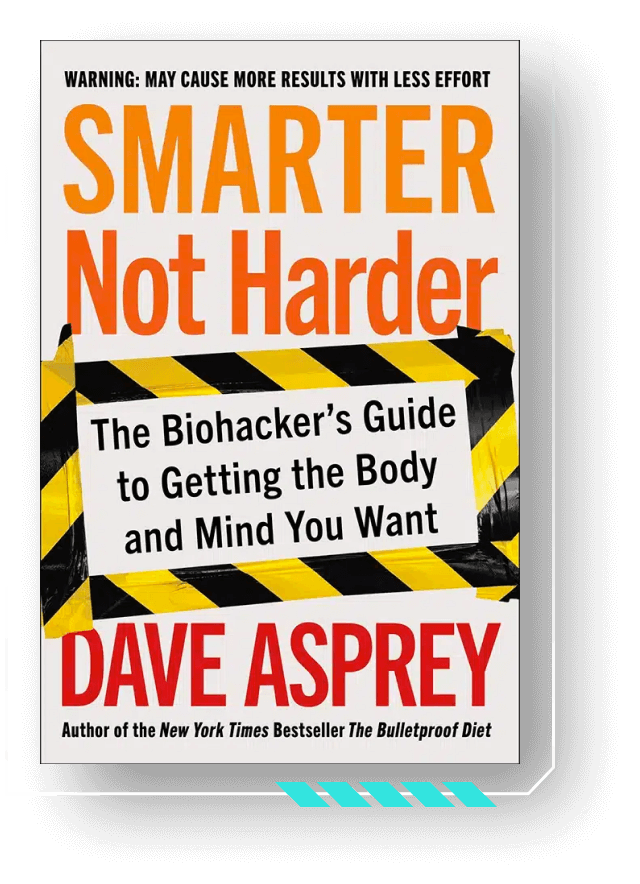
Social anxiety used to be a big part of my life.
It’s not uncommon – about 1 in 5 Americans gets anxious [1] – but it was particularly difficult for me. When I was younger I had many of the characteristics of Aspberger’s Syndrome: I didn’t make eye contact, I didn’t have many friends, and I got very nervous whenever I was around people. Frankly, I didn’t understand how social cues worked. That made me unconsciously fearful of interacting with others, because I knew I would step on people’s toes, but I didn’t know how I was doing it.
At my first job in Silicon Valley I met a guy who was a master networker, and I saw that he was able to do things with his social skills that I could never do, even with my superior technical skills. It was a humbling moment. I realized that if I was going to succeed in life I had to beat my anxiety and figure out the unwritten rules of social interaction.
Here’s what I’ve discovered over the last couple decades. I hope it helps you as much as it has helped me.
Nervous? Address it…or rewire your brain
Anxiety is fairly common – but it’s a weakness you can easily address. Something in your nervous system learned that you might die in social situations. Of course, it’s wrong, but it doesn’t know that. So you feel like you’re going to die at some level, which explains why social anxiety can feel like the end of the world.
The fix for this is at a minimum to recognize it and to take some deep breaths, rather than to believe the feeling. You can also openly own your anxiety. Humans are good at picking up on discomfort, so you won’t fool anyone if you try to play it cool. If you’re asking someone out, for example, you could say something like “I don’t usually do this and I’m a little nervous, but do you want to get dinner with me?” It shows vulnerability and honesty, which is much more endearing than trying to disguise your emotions.
The next thing to consider is reprogramming. I recommend you do one of three things (or all of them):
- Try heart rate variability (HRV) training. It works in two steps. The first step teaches you to recognize the sensation in your body when something triggers your fight-or-flight response. The second step teaches you to control your fight-or-flight response, so you can choose to curb it and stay calm. It’s like playing whack-a-mole with stress: whenever you feel panic pop up, you have the tools to hammer it back down and stay calm. HRV worked wonders for my social anxiety. I’ve been doing it for more than 10 years now. The best HRV unit I’ve found is HeartMath; it balances effectiveness, quality, and price.
- Find a therapist with EMDR skills and do a few sessions. EMDR (eye movement desensitization and reprocessing) is a rapid way to get your nervous system to have more appropriate responses to social settings.
- You can get the deepest change with neurofeedback, which requires a competent neurofeedback trainer in your area. You can get moderate improvements with home neurofeedback.
Interpersonal touch
Interpersonal touch – touching someone in a social situation – can make you happier, and it’s also a fast route to bonding with someone. Touch is ten times stronger than talking when it comes to bonding, partly because it causes both you and the person you touch to release a huge amount of the bonding hormone, oxytocin [2]. Gentle, friendly touch can produce an instant bond, even between strangers, and it increases cooperation, too:
- Touching a bus driver makes him/her more likely to give you a free ride [3].
- Touching someone on the arm when asking for a cigarette makes that person more likely to give you one [4].
- Waitresses who touch customers on the shoulder get bigger tips, regardless of the touched customer’s gender [5].
- When librarians touched students’ hands as students returned books, the touched students rated the library as significantly more pleasant [6].
As people use phones and social media more, human contact becomes rarer. A leading touch researcher found that many people today experience “touch hunger” [2]. If you want to bond with a stranger, touch him or her when you start talking. It’ll make most people much warmer toward you.
Warning: If you suck at reading social cues the way I used to, this may feel awkward to you, and the other person will probably feel it too. That’s okay; it gets easier with practice. Pro tip: the most socially acceptable places to touch a stranger are on the hand, arm, shoulder, and upper back [7].
By the way, I’m a hugger. I like hugs. They release oxytocin. However, I’m a 6’4” male who could probably crush you if I sat on you. That means a hug can be misinterpreted by a nervous system as a threat. So if I don’t know that someone is up for a hug, I’ll ask. As in, “I’m a hugger. Do you want a hug?” Pretty hard to figure that one out, right?
[Tweet “Touch is ten times stronger than talking when it comes to bonding.”]
Remember names
Calling people you’ve just met by name shows that you’re listening and makes them feel like you care. Get into the habit of focusing on people’s names when you first meet them. The classic trick is to work the name into the conversation a few times (“So what do you do, John?”) so that it sticks with you. You can also use a memory association trick: tie the person’s name to a memorable image. If the person is named Carston, for example, imagine Cars that weigh a Ton. The sillier the association, the better you’ll remember it.
None of that crap ever worked for me, but Jim Kwik, a good friend, is master at it – I’ve seen him memorize the names of waiters everywhere he goes and I’m in awe of him for that and many other reasons. You can take his course here.
If you’re like me and memory association doesn’t work, you can always do what I learned they do at Hollywood parties (seriously – it’s hard to believe a hacker like me even gets invited to them on occasion!). You’ll see celebrities say, “Nice to see you.” That’s because they don’t know your name and don’t know if they have met you before. But it’s still nice to see you. 🙂
Compliment people
Compliments feel good, making them a great way to start a conversation with a stranger. You can tie them in with questions too. For example:
- “How do you stay in such good shape?”
- “I love your style. When did you start dressing so well?”
- “You have great taste in books. That’s one of my favorites.”
Only pay compliments if you mean them, otherwise they’ll come off as fake. If you’re nervous about approaching people, make it a goal to compliment a stranger once a day until you’re comfortable.
Listen and ask good questions
Ask questions that go below the surface. It beats talking about the weather.
- “What are you passionate about?”
- “What do you do in your free time?”
- “Do you like your job? Why/why not?”
- “Tell me more about that.”
Questions that start with what, why, when, where, and how will teach you more about a person than yes-or-no questions. Really listen to the answers.
And if you’re prone to talking a lot be sure to shift the focus to the other person. I fall into this trap all the time. People want to know about biohacking, stem cells, mitochondrial function, and smart drugs, so they keep asking, and I keep talking, which can make me sort of a bore. I’m a better conversationalist when I ask them more questions and listen more, and I learn more that way too.
[Tweet “Surround yourself with great people and you’re much more likely to be great yourself.”]
Choose your friends wisely
Legendary motivational speaker Jim Rohn said that, “You’re the average of your five closest friends.”
He was spot on. Your friends – and even your friends’ friends – have a tremendous impact on your goals, productivity, habits, happiness, and even your weight.
Imagine living with a couple not-so-healthy roommates. They offer you some of their pizza every night and ask you to go drinking with them on the weekends.
Now imagine that your roommates wake you up at 9 AM and ask if you want to hit the meditation studio with them – followed by a cup of Bulletproof Coffee, of course.
Which scenario is going to lead to a better you?
You adopt the habits and characteristics of the people you spend most of your time with. According to a 32-year-long study on the social networks of 12,000 people [8]:
- If your friends are obese, you’re 45% more likely to be obese
- If your friends’ friends are obese, you’re 25% more likely to be obese
- If your friends’ friends’ friends are obese, you’re 10% more likely to be obese – even though you probably don’t even know these people
Your friends should enhance your life, not drag you down. As cold as it sounds, if your friends are holding you back, maybe you should consider getting new ones.
You can do this right now. Grab a pen and piece of paper and write down the names of the people in your life, then ask yourself the following questions:
- Does this person challenge you to be better?
- Does this person add value to your life?
- Do you admire this person?
- How do you feel around this person? Drained? Energized?
- What are this person’s goals, and do they align with yours?
- Which of this person’s habits have you adopted?
List out the responses for each friend you have. If you aren’t happy with the results, start crossing off names, and replace them with people who share your values. Are you into fitness? Chat with someone at your gym or yoga class. Passionate about the quality of your food? Start a conversation at your local farmer’s market (or the Bulletproof Coffee Shop). Love biohacking? Join a biohacking group on Facebook and find people in your area. Or make friends at the Bulletproof Conference. 😉
Try taking inventory of the people in your life every six months or so. Surround yourself with great people and you’re much more likely to be great yourself. Thanks for reading; I hope this article helps you upgrade your social life. Subscribe below and stay Bulletproof!
[expand title=”Click to read the complete list of references.” swaptitle=”Click to hide references.”]
- http://www.nimh.nih.gov/health/statistics/prevalence/any-anxiety-disorder-among-adults.shtml
- http://krieger.jhu.edu/mbi/hsiaolab/Courses/Gallace_2010.pdf
- http://www.ncbi.nlm.nih.gov/pubmed/14658752
- http://www.ncbi.nlm.nih.gov/pubmed/17566448
- http://psycnet.apa.org/psycinfo/1985-30769-001
- http://citeseerx.ist.psu.edu/viewdoc/download?doi=10.1.1.474.5401&rep=rep1&type=pdf
- http://www.pnas.org/content/112/45/13811.full.pdf
- http://www.nejm.org/doi/full/10.1056/NEJMsa066082#t=articleTop











